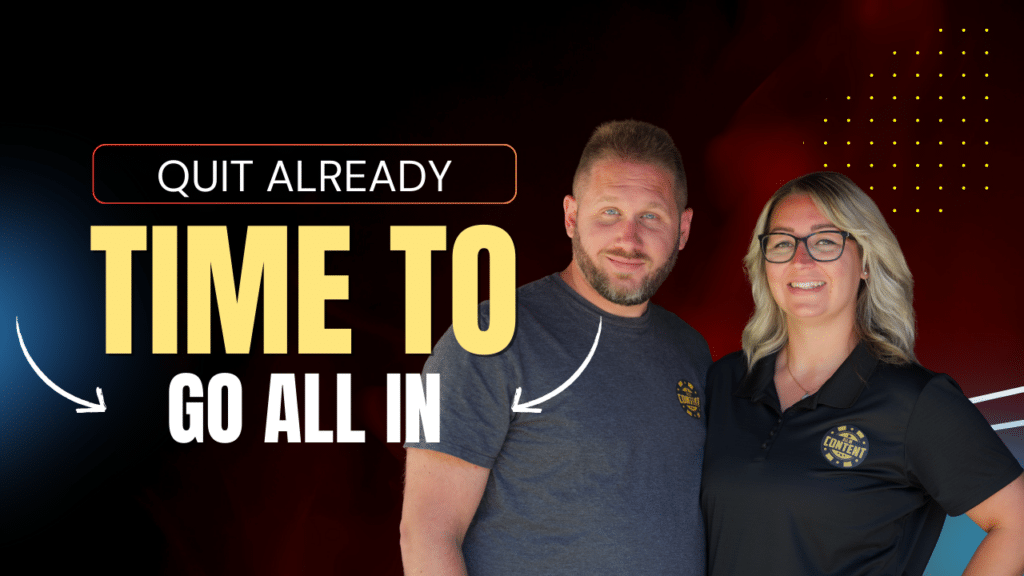Business is very similar in some way to sports, and leadership is a team sport. On many teams, there are captains. Without the team working together, though, no one can score the winning goal or secure that championship. How does the captain or the coach inspire their team to bring their best every single day? Quite often, start by leading by example in consistently demonstrating the responsibility to hold yourself and others accountable. It’s about taking responsibility.
One of the most frustrating things I hear as a leader is, “that’s not my responsibility.” Sometimes people get so wrapped up in what their job description says or doesn’t say. Ultimately, the worst thing someone can do is see a problem and think it is someone else’s responsibility. The next time you see a problem and say to yourself, “Why doesn’t someone do something about this?” take a look in the mirror and say, “I’m going to do something about this.” Coach your team members to do this as well, and you will see tremendous results.
Fostering Personal Responsibility & Accountability
One of the things that many people like to do is point out problems. How many times have you heard someone say, “We have a problem,” and then explain the issue? It happens all the time in almost every business day. As a leader, you might have the urge to give them the answer to solve the problem. Don’t do it unless you want always to be stuck firefighting. If you do, you will not do more value-added work transforming and taking your team (and yourself) to the next level.
Instead, give your team the responsibility of suggesting and offering options to resolve the problems they find. Whenever someone comes to me saying, “we have a problem,” I say one of the following:
- “OK, and what’s your solution?”
- “How do you think it should be handled?
- “What do you recommend?”
Owning the Problem & Solution
I learned early in my career that it’s best to operate in a culture where they hold both the problem and the solution. Even if they don’t have the decision-making authority or the ability to command the resources to solve the problem, they will gain a tremendous amount of growth by thinking of how to tackle the issue they found. Who knows, maybe even they will surprise you and think of a unique way to solve a problem differently than you might have.
I have been guilty of being so quick to answer to solve the problem that I didn’t realize it inhibited the person’s growth when asking for help. How are they going to know for next time how to handle the situation? How would they solve this problem without me?
Answering questions for team members frequently, while at first glance, may seem to be the best course of action. It resolves the issues quicker, but it makes the team more reliant on you as a leader. They become less likely to use their resources, including thinking for themselves and taking responsibility for solving problems. Providing all the answers hurts employee engagement in the long run. It causes frustration for others who see that team members are not developing or taking responsibility and accountability required in tasks and roles.
Demonstrating Commitment
Without commitment, there can not be a strong culture of personal responsibility and accountability. But for commitment to exist, it must start with you first. Your team, subordinates, and even peers look to you to set the example and demonstrate your commitment. To be a great leader, seen as running your operation effectively, you must be more than involved; you must be committed. Commit to doing everything in your power to make sure that you have created the right environment for your team to thrive.
Ensure you prepare, strategize, and plan to see what’s coming and what’s needed for everyone to succeed. Commit to making the team better. No one wants to be part of a team that isn’t showing signs of progress. Avoid having individuals and team members hitting a plateau. Help them get a bit better every day.
Commit To Make Tough Decisions
As a leader, you have a tremendous responsibility to ensure your operation is working as it should and, if it isn’t, doing something about it. If it’s broken, then fix it! Sometimes that means making tough decisions like terminating an employee or shutting down a project. Sometimes things do work, but sometimes they don’t. As Kenny Rogers said, “you need to know when to hold them and know when to fold them.”
Commit To Developing Everyone’s Strengths
Improving weaknesses, while not impossible, can be a tough process to go through. It’s much more useful to work on creating an environment where people operate where they are strongest. It ensures higher productivity and efficiency while maximizing performance.
Commit To Removing Barriers
Throw stones and obstacles out of your team’s way so that they can be successful. The more walls you break down, the more successful everyone will be as you get your squad new tools, resources, and time back.
Commit To Inspiring Your Team.
Indeed inspirational leadership is not about selling a vision; it’s about showing people how the concept can directly benefit them. It’s also about teaching them how their specific needs can be satisfied. Your job as a leader is to increase people’s sense of self-determination, self-confidence, and personal effectiveness to set them and the team up for success.
If you’re committed, so will others follow your lead. If you have fostered a culture of responsibility where everyone buys in, you’re on your way to success.







